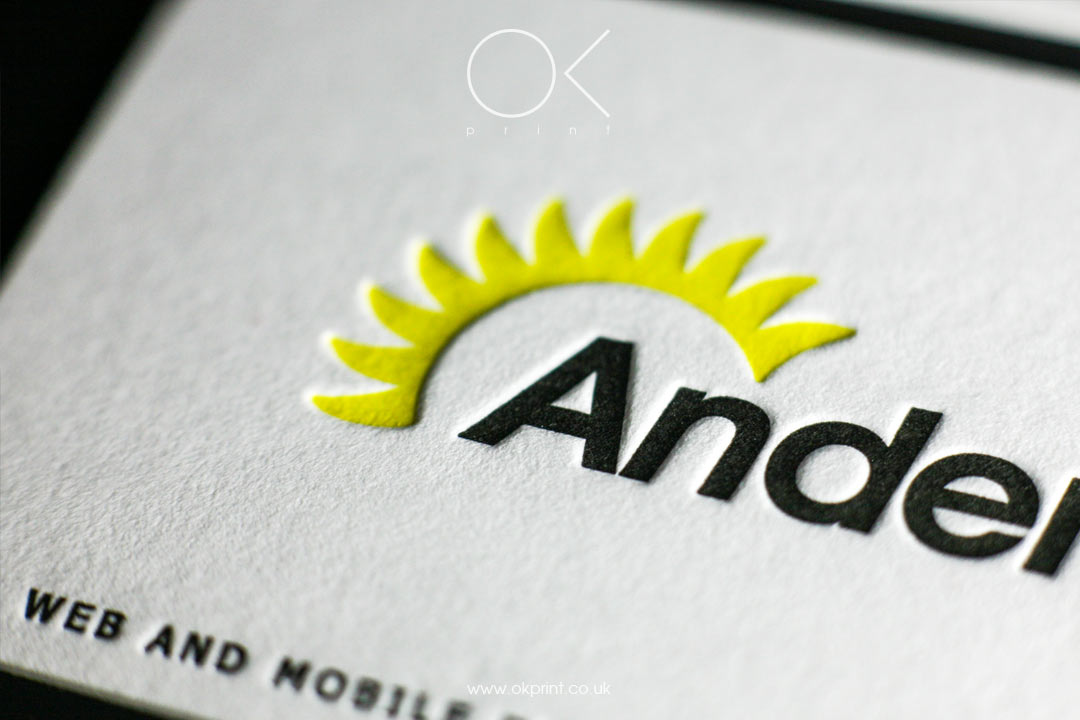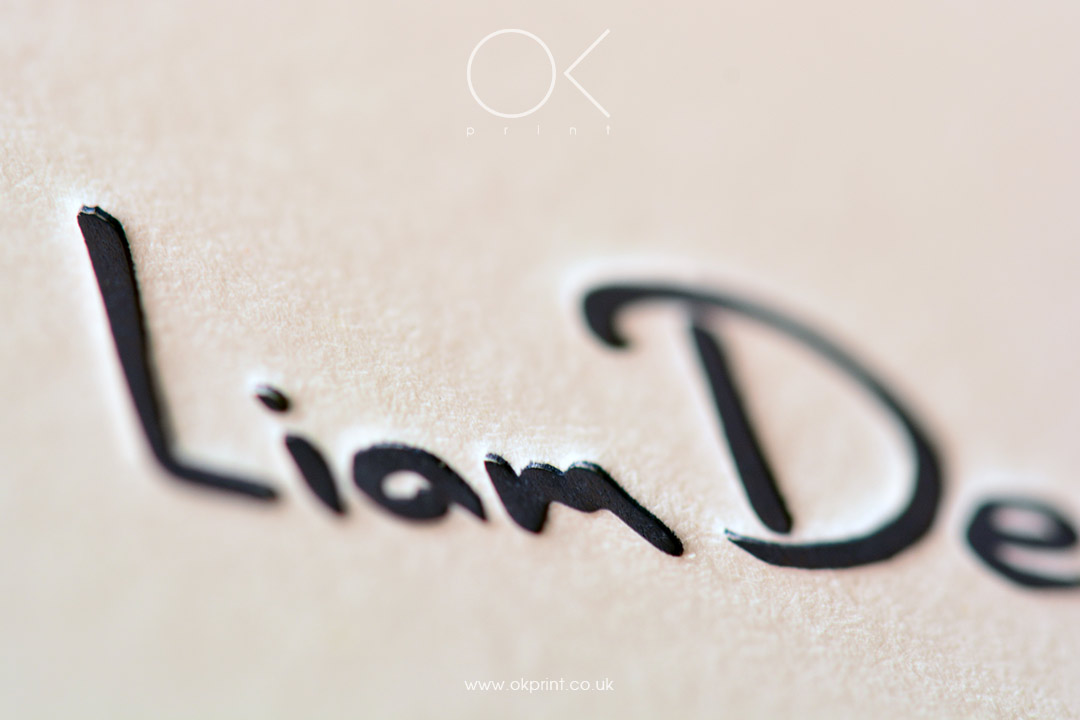LETTERPRESS PRINTING
Letterpress is an ancient, prime printing format, it receives its name in connection with a feature of printing form. The pattern to be printed is transported to the material by higher elements of a printing form, intervals between them which are called spacing are deepened. Higher elements are covered with special paint which is transported to paper with particular pressure, as a result slightly pressed, relief images and texts with a clear boundary are formed; this process is similar to use of a rubber stamp and a stamp pad. This printing form remained the basic one through several centuries, because of the simple principle of work and easy printing forms of production.
HISTORY OF LETTERPRESS
Letterpress is a source print technology. It occurred between 650 and 670 AD in ancient China when image replication on paper with moving type was devised. Hieroglyphs were cut out on wooden cubes, cubes were formed in sentences, special paint was applied on them and then paper was pressed to needed surface. General principle was adopted in Korea where a faster way of printing with clay letters was discovered, though the quality of such work left much to be desired. Bronze letters replaced the clay ones in the 13th century. Publishing arose in Western Europe at the end of the 14th century and the beginning of the 15th. Primarily wood served for printing forms production on which the patterns applied, though it was not economical and was insufficient in satisfying society requirements. Printing with the use of moving type solved these problems.
Johann Guttenberg is regarded as the letterpress inventor, though this technology was ascribed to different people at different periods with continuous disputes on the subject. Guttenberg created the movable embossed letters cut out in a mirror image.
Guttenberg achieved considerable success, even without a source of finance, an absence of experienced workers and a lack of advanced tools. The first machine for printing appeared to be a very complicated mechanism where the majority of operations were carried out manually. Today the letterpress technic hasn’t undergone major changes, despite the creation of more high-speed devices, mechanised processes and new materials being in use. Just like half a century ago the fundamental principles remain invariable and the great devise of Guttenberg lives still. Guttenberg’s brainchild has immortalised his name; this way of publishing has exerted huge impact not only on the European culture, having become a tool in the increase of the level of knowledge, but also on the world history.



Because of the high elements of printing form, there is such a beautiful effect of a relief on printed materials. Special soft paper made from 100% cotton which is made by several producers in Europe and America is necessary for the achievement of this effect. Such soft paper is very suitable for pressing. Creation of a relief on paper gives to simple models volume and attraction, even without usage of color.
Features of a letterpress such as beauty of quality cotton paper and stamping, are shown in full with the creation of invitations, letterheads, business cards, souvenir products, price tags, exclusive packing. Letterpress is perfect for such procedures as carving, numbering, punching, stamping using foil etc. Letterpress business cards are unique and make better impressions. Any products made with this method leave a strong impression, it is pleasant to hold them in your hand and it is hard to give them back.
In recent years the new tendency in the market has declared itself distinctly. The growing aspiration to individualisation means gradual replacement of mass production with specialised editions which are equitable to narrow interests of separate social and professional groups, it therefore means the inevitable transition to the limited printed articles. The authentic letterpress machines are not produced anymore though distinguished in high degree of reliability; it’s still used and functions perfectly. Using of ancient presses with century old history adds some rare value to the works, each print is made literally by hand therefore each product becomes unique and unlike the rest. For this reason this type of polygraphy will never fall into oblivion and its popularity is caused by the originality of appearance, special tactile effect and an opportunity to literally touch history with this ancient technology.
We have been doing this for a while and we will always be able to advise you with the selection of paper and pantone colour choices.
CONTACT US
Here you can make an online order for any letterpress printed product or its design. Simply fill out the form below. Enter your details for feedback and tell us what you would like to order, or ask for a quotation. Our super-manager will contact you immediately to confirm your request, while simultaneously revealing the secret of life in harmony with itself and the world.
